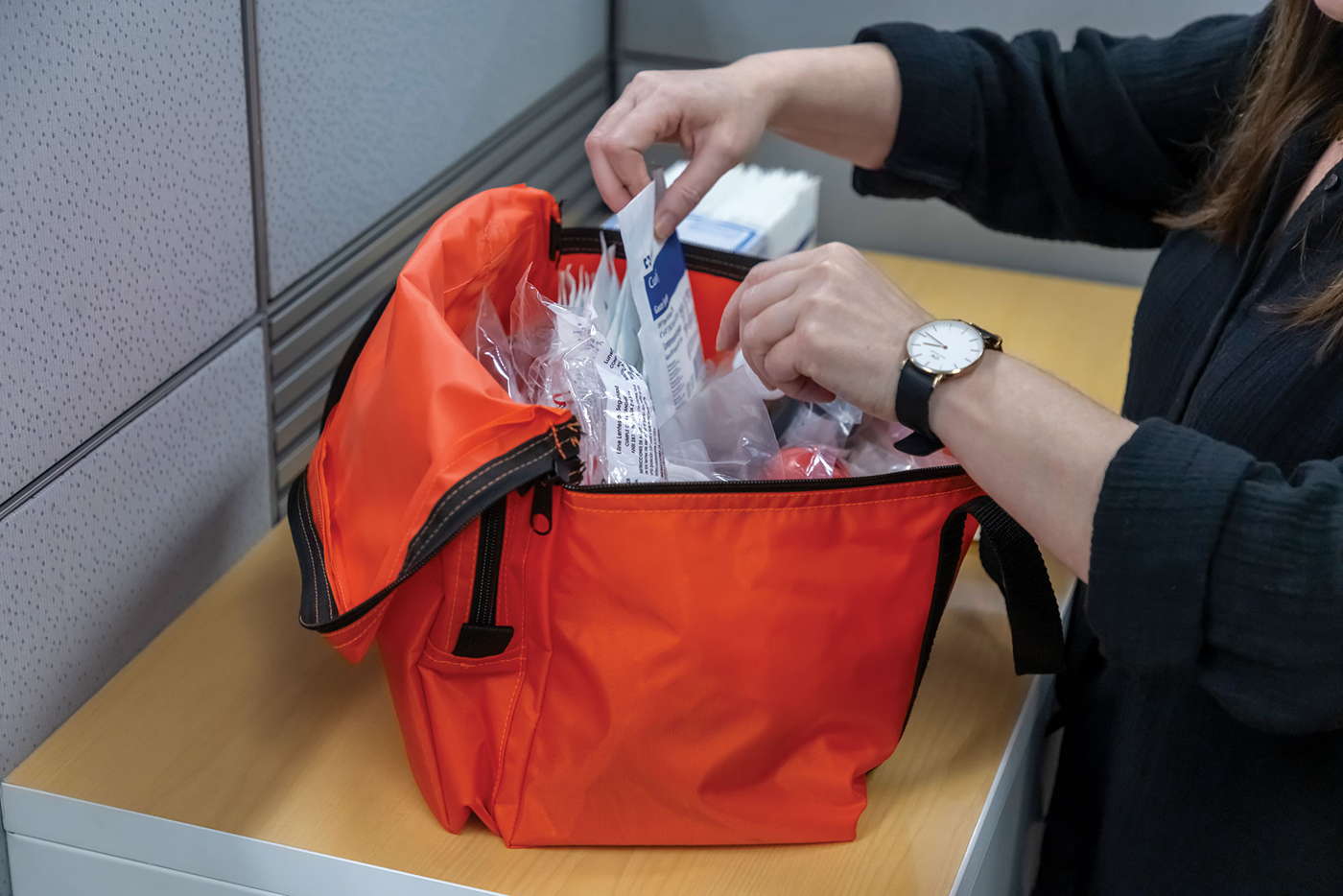New workplace first aid requirements
On November 1, 2024, amendments to the Occupational Health and Safety Regulation for occupational first aid will come into effect. These amendments align the OHS Regulation with standards set by the Canadian Standards Association (CSA). To meet the new requirements, B.C. employers will need to review their current first aid plans and adjust them if necessary.
By Steven Gilstead
“We continue to work toward implementation of the upcoming changes to workplace first aid requirements,” says senior prevention advisor, Diana Janke. “Over the past few months, we have launched the new workplace first aid curriculum. We also published several resources to help employers determine their minimum levels of first aid under the new requirements.”
New first aid curriculum now available
In the summer, WorkSafeBC released the new CSA-aligned curriculum for training providers. Starting in September, these training providers will only offer CSA-aligned programs.
“Under the new curriculum, the courses that were formerly known as OFA levels 1, 2, and 3 are now called basic, intermediate, and advanced,” says Janke. “Another change made was to shorten the duration of the intermediate course to two days from five. The basic and advanced first aid courses remain largely unchanged.”
First aid attendants can now take the new courses from an approved training provider. However, employers intending to use intermediate-level attendants before November 1 must also conduct a written first aid assessment and comply with the other requirements of the amended OHS Regulation.
What it means for current certificates
All OFA certificates are still valid until their expiry date. For example, a certificate issued April 9, 2024, will be valid until April 9, 2027. On November 1, all active OFA certificates will become equivalent to basic, intermediate, and advanced certificates.
Level 2 certificates expiring between July 2 and October 30, 2024, will be accepted as valid through October 31. Attendants do not need to hold an intermediate-level certificate until November 1. They must complete the intermediate course by October 31 to work as an intermediate-level attendant beginning November 1.
New resources available for employers
“We have published several resources to help employers with the changes to the OHS Regulation,” explains Janke. “These include preliminary revised OHS Guidelines, and an updated backgrounder. We also have a frequently asked questions (FAQ) document to help explain the changes.”
The FAQ covers key changes to the OHS Regulation, including:
- Examples of less-accessible workplaces
- Considerations for employers with multiple workplaces
- How to take hospital closures and diversions into account
- Types of vehicles acceptable for emergency transport
There is also a first aid assessment worksheet that employers can use to assess the first aid requirements for each workplace. This written assessment is a new requirement under the changes. Completing the worksheet will help employers determine the first aid services they need at their workplace.
Visit worksafebc.com/firstaid to find these resources and other details about the new requirements. More resources will be linked there in the coming months, including a video in September that will describe:
- First aid assessments
- Training and credentials
- Equipment requirements
- Workplace factors (including remote and less accessible workplaces)
This information originally appeared in the Fall 2024 issue of WorkSafe Magazine. To read more or to subscribe, visit WorkSafe Magazine.

